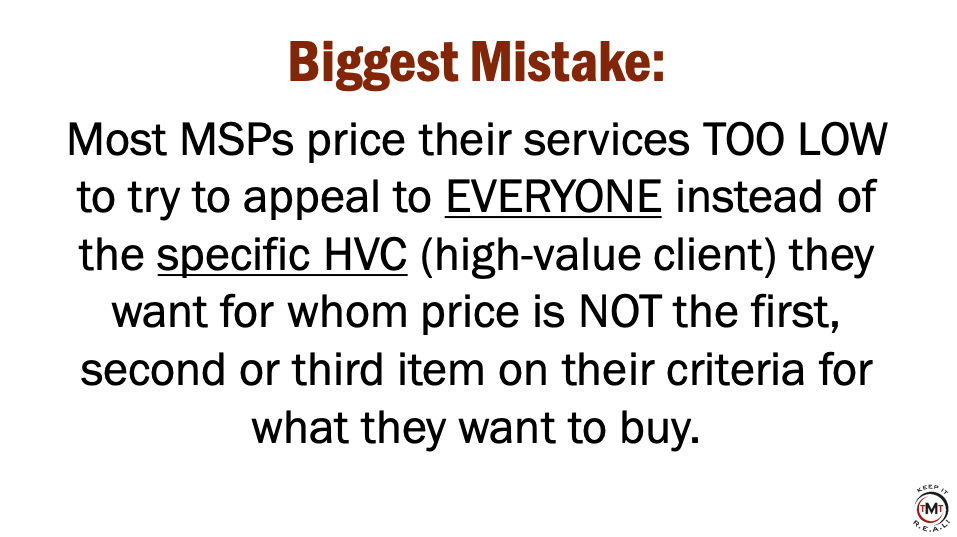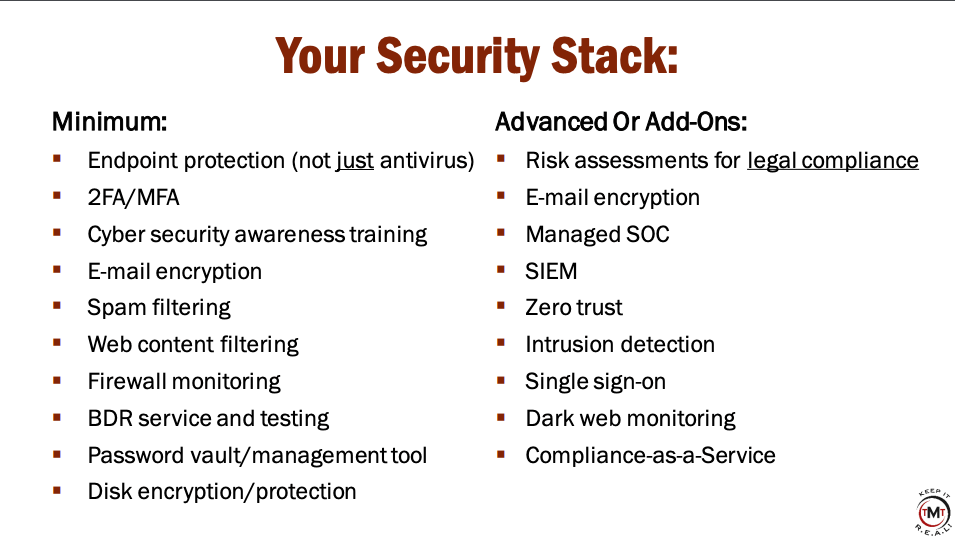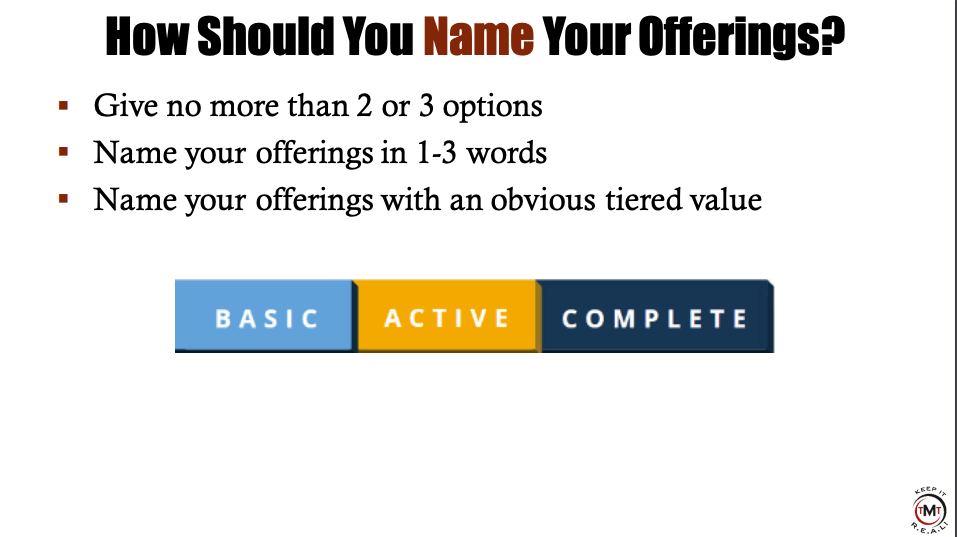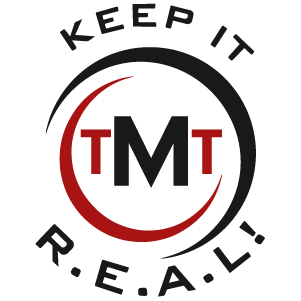Establishing a robust and efficient pricing and packaging model is essential for building a successful MSP business. In this guide, Robin Robins, the innovative founder and CEO of Technology Marketing Toolkit (TMT), and Will Nobles, the accomplished CEO of Vector Choice, share profound insights and strategies for optimizing, packaging, and pricing managed services aimed to empower MSPs with the wisdom to overcome challenges and leverage opportunities in the industry.
The topics discussed:
- Your Service Offering Must Be Profitable, Scalable, And Competitive
- The Old Way To Price Managed Services That Needs To Change
- Managed Services By The Numbers
- How To Price Your Services So You’re Guaranteed To Make Money
- New Strategies To Remain Profitable And Competitive
Download your pricing chart here!
Your Service Offering Must Be Profitable, Scalable, And Competitive
In the realm of managed services, ensuring that your offering is not only profitable but also scalable and competitive is paramount. The essence of a successful managed service provider (MSP) lies in its ability to deliver services that not only bring in revenue but also grow and adapt to the changing market.
Profitability
The cornerstone of any service offering is its profitability. As one speaker puts it, “If you are selling an unprofitable managed services offering, you are very quickly going to implode.” The ability to generate profit isn’t just about charging more but understanding and controlling your costs to maintain a healthy margin.
Scalability
Scalability is crucial. It’s about having a service offering that can grow and evolve with your business and your clients. An MSP must develop services that can be expanded or adapted without proportionally increasing costs. This growth should be sustainable and manageable.
Competitive
To stay competitive, it’s not enough to just be cheap. Competitiveness comes from delivering the right services with the appropriate support. As the speaker advises, “Being competitive is not necessarily just being cheap. You got to have the right services and support baked in.” This implies understanding the market, your client’s needs, and how your services stack up against competitors.
The Old Way To Price Managed Services That Needs To Change
Managed services pricing has undergone significant transformations, moving away from traditional models to more integrated and value-driven approaches. This shift highlights the evolving landscape of IT services and the growing importance of combining core offerings with essential security measures.
Integrating Security With Managed Services
In earlier pricing models, managed services and advanced cyber protection were often offered separately. However, the trend has been moving towards making security an integral, non-negotiable part of managed services. Highlighting the significance of security in IT offerings, it’s become clear that to do business in the current climate, the minimum requirement must include robust security solutions. This approach not only enhances client protection but also demonstrates a service provider’s commitment to addressing contemporary cyber threats.
Focusing On Value and Risk Mitigation
When it comes to pricing, the shift is toward appealing to discerning business owners who recognize the value of risk mitigation. It’s increasingly important to communicate how managed services reduce the risk to the business, moving the conversation beyond price to the value of protecting and enhancing operations.
Compliance and Industry-Specific Needs
A more nuanced approach to managed services involves understanding and meeting industry-specific compliance requirements. This can range from adhering to state and federal cybersecurity regulations to meeting specific insurance mandates. Tailoring services to these requirements not only ensures compliance but also adds a layer of customization and value to the service offerings.
Moving Away From Unlimited Service Models
The industry is steering clear of ‘all-inclusive’ or ‘all you can eat’ pricing models. These models, while initially appealing, often lead to unsustainable business practices and client dissatisfaction. Professional managed services require clear boundaries and an understanding of what’s included and what’s not, thereby avoiding the pitfalls of unlimited service promises.
Clarity In Service Offerings
Defining the scope of services with precision is key to successful managed service relationships. This includes being explicit about what constitutes ‘unlimited’ support, setting clear boundaries, and managing client expectations from the outset. Such clarity prevents misunderstandings and ensures that both provider and client have a shared understanding of the services being rendered.
These changes in managed services pricing reflect a broader evolution in the IT services industry, emphasizing the importance of value, security, and clear communication in crafting sustainable and mutually beneficial client relationships.
Managed Services By The Numbers
Understanding the financial dynamics of managed services is crucial for any IT service provider aiming to be profitable, scalable, and competitive. To ensure a healthy business, certain metrics and pricing strategies should be followed.
Recurring Revenue Target
A key goal for managed service providers (MSPs) is to achieve a substantial portion of their total revenue from recurring sources. Ideally, 70% of total revenue should be recurring, with the remainder coming from projects. For example, a $1 million per year MSP should aim for $700,000 in annual recurring revenue, with the rest derived from project-based work.
Pricing Strategies
Pricing is a critical factor in the profitability of managed services. For infrastructure management and helpdesk services, the baseline pricing should not be less than $150 per seat. This ensures that the service is not only competitive but also profitable. It’s important to note that geographical location can impact pricing; what is competitive in one region may not be in another. However, consistently pricing services below $150 per seat is a likely indicator of underpricing and potential unprofitability.

Profit Margins and Gross Margin Goals
Profitability is defined not just by revenue, but also by maintaining healthy margins. For managed services and projects, a 50% gross margin is a basic target, while hardware should see a 20% markup. These margins ensure that the business remains financially healthy and the owner can draw a fair market salary, ranging from $100,000 to $500,000 annually, depending on the company’s size and revenue.
Net Profit Benchmarks
Best-in-class MSPs aim for a net profit (EBITDA) of around 20%, with 10% being the minimum threshold for sustainability. Falling below 10% in net profit is a warning sign, indicating that the business model needs urgent reevaluation.
Churn Rates
Churn, or the rate at which clients stop doing business with the MSP, should be carefully monitored and kept under control. An acceptable churn rate for managed services is less than 12%. This metric helps in understanding client satisfaction and business stability.
Adjusting Pricing With Market Conditions
With the ever-changing economic landscape, including factors like inflation, MSPs need to be agile in adjusting their pricing. Successful MSPs have been observed to raise their prices by 20 to 25% while still achieving growth. Not adjusting prices in line with market conditions can lead to reduced profitability despite increased revenue.
Understanding Costs And Value
When setting prices, MSPs must consider both hard and soft costs to maintain the right profit margins. The perceived value of the services, such as comprehensive IT support that includes monitoring, preventive maintenance, and more, often justifies the pricing. An MSP’s offering is not just about the raw numbers but also about the comprehensive solutions and peace of mind provided to clients.
Most MSPs Price Their Services Too Low
A prevalent error among MSPs is the tendency to undervalue their services. There is pressure within the industry to either overcharge to prove value or undercharge to win business. However, the key lies in finding the right balance — charging enough to remain profitable without pricing yourself out of the market.

The Top 5 Profit Killers for MSPs: Profitability in managed services can be undermined by several key factors, though these aren’t explicitly listed in the transcript excerpt. Drawing from the context, it’s reasonable to infer that profit killers include:
- Underpricing: As mentioned, charging too little for services eats into profit margins.
- Lack of Scalability: Customizing services for each client can impede scalability, making it hard to grow efficiently.
- Inefficient Service Delivery: Ineffective delivery models or operational inefficiencies can drastically reduce margins.
- Poor Client Segmentation: Not identifying the right type of client or targeting those who don’t value the services adequately can lead to pricing challenges.
- High Operational Costs: Allowing costs to spiral without adequate controls can quickly erode profits.
By understanding these pitfalls, MSPs can refine their pricing strategies to ensure they not only cover costs but also generate a healthy profit margin.
How To Price Your Services So You’re Guaranteed To Make Money
Pricing your managed services correctly is fundamental to ensuring profitability, sustainability, and growth. This section outlines how to set prices effectively, covering different types of managed services pricing and the benefits of maintaining premium profit margins.
What Should You Charge
To ensure profitability, the pricing of services needs to be carefully strategized:
- Project Fees: Generally, these should start at $200 per hour.
- Full Support, Fixed Fee: This should range between $150 and $275 per seat.
- Partial Support: Prices should be set between $130 and $165 per seat.
These rates should exclude projects, subscription software (like Office 365), line-of-business applications, hardware additions, moves, changes, and other professional services. The exact pricing should be determined based on the cost of services and tools included in your stack.
The Two Primary Types Of Managed Services Pricing
- Full Support (or All-You-Can-Eat): This typically includes monitoring, management of the environment, help desk support, managed security, onsite support, and fractional CIO services (like planning and budgeting). It’s usually charged per user or device, though projects and major changes are not included and should adjust the pricing.
- Partial Support: In this model, monitoring and maintenance are included, but help desk support, onsite support, and projects are billed at an hourly rate. This approach provides flexibility and can be more appealing to clients with varying needs.
Premium Profits: What Do They Do for You
Achieving premium profits, those substantially above the industry average offers several strategic advantages:
- Market Dominance: Higher profits provide the capacity to outspend competitors in marketing and client acquisition, granting a significant competitive edge.
- Efficiency: By earning more with fewer clients, you can operate more efficiently, reducing chaos and focusing on high-value customers.
- Quality Staffing: Profitability allows you to hire top talent, improving service quality and reducing the headaches often associated with managing a larger, less skilled workforce.
- Premium Service Delivery: This results in enhanced client loyalty, enabling further price increases, additional sales, and referrals.
The act of raising prices, even by a modest percentage, can have a profound impact on your bottom line. A 10% increase can potentially double net profits because the additional revenue directly contributes to profit without incurring proportional costs. Conversely, a 10% discount can eliminate the entire profit margin on a service, nullifying the financial benefit of having that client.
In summary, to guarantee profitability in your managed services business, you must strategically set your prices, carefully consider the types of services you offer, and understand the transformative power of premium profits. Balancing these factors will ensure not only survival but thriving growth in the competitive IT services market.
What Services You Must Start Including
Offering IT services requires careful consideration of what to include in your service packages and how to price them. This section delves into the key components of IT service offerings and strategies for setting competitive, yet profitable pricing.

Components Of IT Service Offerings
- End-User Support: Help desk services, troubleshooting, and immediate technical assistance.
- Core Infrastructure Management: Overseeing servers, routers, switches, and essential IT infrastructure.
- Risk Mitigation: Cybersecurity, data backup, compliance, and other measures to reduce business risks.
- Fractional CIO Leadership: Offering strategic IT leadership on a part-time or need basis, focusing on integration with the client’s service stack, enhancing productivity, and competitive growth.
- Professional Services: Including moves, add changes, and specific project work.
- Proactive Account Management: Combining sales and customer service for continuous engagement and improvement.
Pricing Strategy And Philosophy
- Annual Price Increases: Implementing a systematic approach to adjusting prices, e.g., a 5% increase yearly.
- Transparency in Pricing: Clearly communicating any price changes, especially in cases of new services added.
- Profitability Analysis: Regularly evaluating the profitability per client and across the business to make informed pricing decisions.
Measuring Profitability
- A simple formula is Revenue – (Direct Costs + Overhead Costs) = Net Profit.
- Aim for a balance of Gross Margin, General and administrative Costs, and Net Profit (e.g., 50% Gross Margin, 30% G&A, 20% Net Profit).
- Consider the “Rule of 40”: The sum of growth rate and net profit margin should ideally equal 40%.
Service Options To Avoid
- Avoid “break-fix” as an ongoing support mode.
- Be wary of offering low-cost services just to gain customers, which can lead to underpricing and overextending.

Service Packaging And Naming
- Develop tiered service packages (e.g., Basic, Active, Complete) to provide clear choices and encourage upgrades.
- Name packages to appeal to client aspirations (e.g., Professional, Security Minded).
Cybersecurity And Compliance
- Update service offerings with essential cybersecurity measures as per insurance and compliance requirements.
- Incorporate advanced add-ons for higher-tier packages.

Positioning And Selling IT Services
- Emphasize business outcomes and strategic value rather than just technical details.
- Position services in a way that resonates with C-level executives, focusing on budgets, cybersecurity, and risk management.
New Strategies To Remain Profitable And Competitive
Upgrading And Revising Service Offerings
Staying ahead of the curve requires continual reassessment and enhancement of service offerings. This includes the integration of advanced cybersecurity measures, which can also justify an increase in pricing.
- Revise the Service Stack: With increasing requirements from cyber insurance providers, it’s crucial to include updated cyber protections like endpoint protection, multifactor authentication (MFA), cybersecurity training, and email encryption. These measures not only strengthen your service portfolio but also ensure compliance with the growing demands of cybersecurity insurance.
- Minimum Requirements for Compliance: Align your service stack with the minimum cybersecurity insurance requirements and build on them for more advanced offerings. This can include managed Security Operations Center (SOC) services, zero-trust environments, intrusion detection systems, and dark web monitoring.
Strategic Partnerships And Market Positioning
- Partner with Cybersecurity Insurance Providers: Develop relationships with local cybersecurity insurance sellers. This partnership can be mutually beneficial — you can refer business to each other, enhancing both service value and client trust.
- Reframe Service Contracts Annually: Update your service contracts each year, introducing new tools and solutions that align with emerging trends and client needs. This approach not only provides a natural opportunity for price adjustments but also demonstrates your commitment to staying current and competitive.

Contract And Pricing Strategies
- Flexible Contract Terms: Consider offering 1 to 3-year contracts with price incentives for longer commitments. Implement a reasonable annual fee increase (e.g., 5%) to accommodate inflation and rising costs.
- Buyout Clauses and Trial Periods: For longer contracts, incorporate a buyout clause (e.g., 75% of the remaining contract value) to offer clients flexibility. Additionally, consider offering a trial period (e.g., six months) where clients can opt out before fully committing, which can help build trust and client satisfaction.
- Payment Methods and Processing Fees: Streamline your billing processes by accepting only bank drafts or credit card payments. If choosing to accept credit cards, consider passing on the processing fee (e.g., 3.5%) to the client. Utilizing services like Connect Booster can simplify these transactions.
Cost Analysis And Pricing Calculators
- Comprehensive Pricing Calculators: Develop pricing tools that account for all costs, including both the direct costs of tools and devices and the indirect costs like labor and support. This ensures that your pricing strategy is both competitive and profitable.
- Labor Cost Inclusion: Factor in the labor costs associated with each device or service supported. Estimating the average time spent per device or service can help in accurately pricing your offerings.
Conclusion
The insights shared by Robin Robins and Will Nobles offer a comprehensive guide for MSPs to revolutionize their approach to managed services. The focus on operational insights, innovative models, value delivery, and entrepreneurial leadership provides a blueprint for emerging and established MSPs to navigate the complexities of the industry successfully. By embracing these strategies and principles, MSPs can fortify their market presence, ensure scalable growth, and build a legacy of excellence and reliability in the managed services sector.
Want more marketing campaigns that WORK for MSPs? Get our Ultimate Free Marketing Guide today and use it to get new leads fast and grow your IT business profitably.

